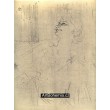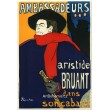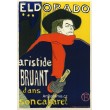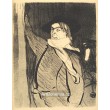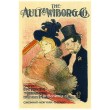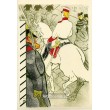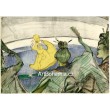Košík
0
x
Produkty
(prázdný)
Žádné díla
Bude determinováno
Dopravné a balné
0 Kč
Celkem
Produkt byl úspěšně přidán do nákupního košíku
Počet
Celkem
0 ks zboží.
1 dílo v košíku.
Za díla:
Doručení a balné:
Bude determinováno
Celkem
Kategorie
- grafiky/tisky
- obrazy
- kresby
- plakáty
- fotografie
- exlibris
- bibliofilie
- knihy/katalogy
- starožitnosti
- sochy/plastiky
- sklo
-
Hnutí
- abstrakce
- art-deco
- čs.avantgarda/moderna
- expresionismus
- fauvismus
- impresionismus
- kubismus
- naivní umění
- op-art
- poetismus
- pop-art
- realismus
- secese
- sociální kritika
- soudobá tvorba
- surrealismus
- světová avantgarda/moderna
- Škola prof. Albína Brunovského
- Škola prof. Zdeňka Sklenáře
- Škola prof.Julia Mařáka - mařákovci
- Žánr
- Zprávy/NEWS
- Doporučujeme
Nová díla
-

Pro Jana Zábranu
3 388 Kč -

Miroslav Horníček
726 Kč -

Autoportrét s Jiřím Suchým
726 Kč
-

Pomíjivost (Editio 13)
290 Kč -60% 726 Kč
Hnutí
- abstrakce
- art-deco
- čs.avantgarda/moderna
- expresionismus
- fauvismus
- impresionismus
- kubismus
- naivní umění
- op-art
- poetismus
- pop-art
- realismus
- secese
- sociální kritika
- soudobá tvorba
- surrealismus
- světová avantgarda/moderna
- Škola prof. Albína Brunovského
- Škola prof. Zdeňka Sklenáře
- Škola prof.Julia Mařáka - mařákovci
Žánr
NEJŽÁDANĚJŠÍ UMĚLCI
- Anderle Jiří
- Augustovič Peter
- Benca Igor
- Beneš Karel
- Bím Tomáš
- Born Adolf
- Brun Robert
- Brunovský Albín
- Boštík Václav
- Bouda Cyril
- Bouda Jiří
- Braque Georges
- Brázda Jiří
- Buffet Bernard
- Cézanne Paul
- Čapek Josef
- Čápová Hana
- Dalí Salvador
- Demel Karel
- Dudek Josef
- Dufy Raoul
- Effel Jean
- Felix Karol
- Filla Emil
- Giacometti Alberto
- Grosz George
- Chagall Marc
- Istler Josef
- Janeček Ota
- Jiřincová Ludmila
- Kandinsky Wassily
- Kĺúčik Peter
- Komárek Vladimír
- Kulhánek Oldřich
- Kupka František
- Lada Josef
- Lhoták Kamil
- Matisse Henri
- Miró Joan
- Mucha Alfons
- Muzika František
- Picasso Pablo
- Pileček Jindřich
- Reynek Bohuslav
- Sukdolák Pavel
- Suchánek Vladimír
- Svolinský Karel
- Šíma Josef
- Špála Václav
- Švabinský Max
- Švengsbír Jiří
- Tichý František
- Toulouse-Lautrec Henri de
- Toyen
- Trnka Jiří
- Váchal Josef
- Vik Karel
- Warhol Andy
- Zábranský Vlastimil
- Zoubek Olbram
- Zrzavý Jan
Seznam děl umělce Toulouse-Lautrec Henri de
Toulouse-Lautrec Henri de (tulúz lótrek), 1864-1901, franc. malíř a grafik. Studoval nesoustavně 1883 u L. Bonnata, 1884 u Cormona vlastními jeho učiteli byli Japonci a Degas. Téhož roku začal se stýkat jenom s bohémou a octl se v prostředí Montmartru s
Toulouse-Lautrec Henri de (tulúz lótrek), 1864-1901, franc. malíř a grafik. Studoval nesoustavně 1883 u L. Bonnata, 1884 u Cormona vlastními jeho učiteli byli Japonci a Degas. Téhož roku začal se stýkat jenom s bohémou a octl se v prostředí Montmartru s jeho tehdejšími kabarety (Chat noir, Mirliton, Moulin-Rouge), předměstskými scénami a tančírnami. Kresba stala se mu deníkem života, do něhož se ponořil, který vsak dovedl vidět s ironickou břitkostí, a zároveň látkou k obrazům, jež maloval především před svým příklonem k litografii. Velkou část obrazů shromáždilo [Toulouse-Lautrec]-ovo museum v jeho rodišti. Litografické dílo čítá na 368, většinou barevných listů a patří k jádru jeho díla. Hledanou sběratelskou vzácností jsou jeho litografické plakáty, pozvánky a pod., tištěné v malém počtu. Největší soubor grafického díla je v pařížské Národní knihovně a v brémské Kunsthalle. Srv.: H. Coquiot, H. [Toulouse-Lautrec] 1913; Th. Duret, L. 1931; M. Joyant, H. [Toulouse-Lautrec], 2 sv. 1926-27; Fr. Kovárna, Souč. malířství 1932; Ant. Matějček, Dějiny umění VI. 1936. -rna.
(In: Ottův slovník naučný nové doby)
* * * * * Henri-Marie-Raymond de Toulouse-Lautrec-Monfa (1864-1901) had the misfortune to break both his legs in childhood, as a result of which he was stunted in his growth. In 1882, he began to study art seriously in Paris and by 1885 had a studio in Montmartre. He exhibited at the Salon de Independents and in 1891 his first posters brought him immediate recognition. He made his first color prints in 1892, and held a one-man show in Paris in the following year. In 1894, he went to Brussels, and in 1895 made his first of several visits to London, where he knew Oscar Wilde and Beardsley. He held a second exhibition in 1896, and visited Holland, Portugal, and Spain, but in 1898 his health began to suffer from drink. In 1899, he spent three months in a clinic recovering from alcoholism, and during his convalescence he worked on a series of drawings of the circus. After his recovery, he resumed his old life, but in 1901 he broke down completely and was taken to his mother's country house, where he died.
His first teacher had encouraged, him to paint animals, particularly horses. After he began studying in Paris, he met Emile Bernard and van Gogh, and he was deeply influenced by the technique and subject matter of Degas, and by Japanese prints, the influence of which was all pervasive in Impressionist circles. His subject matter was centered narrowly round the life he led: some portraits, many painted out-of-doors, scenes from dance halls and cafes in Montmartre, such as the Moulin Rouge, Or from Aristide Bruant's cabaret Le Mirliton, figures of actresses, female clowns, circus artists seen backstage, and a great number of nudes, either a la Degas washing, dressing or seen sitting around in brothels, waiting for customers. He loathed posed models; these naked women just walking or lounging about provided him with models in movement and under no restraint either in pose or behavior, and to study them he lived for some time in maisons closes.
His technical range was very wide. He was a superb draftsman with a gift for conveying rapid movement and the whole atmosphere of a scene with a few strokes. Most of his paintings are in spirit-thinned oilpaint or unprimed cardboard, using the neutral buff tone of the board as an element in the design. He executed a large number of posters in lithography, with masterly handling of highly simplified line, large areas of flat color, and a unique concentration on the eye-catching quality of the design. He also made small lithographs, either for menu heads, programs, book covers, or the like, or as single prints or series from his usual subject matter. Occasionally, he used watercolor and pastel, and towards the end of his life his use of oil paint tended to become heavier, more impasted, with more solidly painted backgrounds. He was not interested in light as were the Impressionists, but only in form and movement, and most of his works are devoid of chiaroscuro; for him, light illuminated, never enveloped. He subscribed to no theories, was a member of no artistic or aesthetic movement, and the works in which he records what he saw and understood contained no hint of comment no pity, no sentiment, no blame, no innuendo. There are works in most museums of modern art.
In: http://www.centaurgalleries.com/Artists/Artist.cfm?ArtistID=00188
* * * * *
1864 Born in Albi, France
1872 Attends Lycée Fontanes in Paris
1881 Passes his baccalaureate in Toulouse, travels to Paris
1882 Entered studio of Léon Bonnat
1882 - 1886 Joined atelier of Fernand Cormon. Meets Louis Anquetin, Emile Bernard, and Vincent van Gogh
1901 Dies in Malromé, France
Selected Exhibitions
1898 Goupil Gallery, London
1897 Libre Esthetique, Brussels
1896 Joyant Gallery
1896 Poster exhibition in Reims
1895 Lithography Exhibition, School of Fine Arts in Paris
1893 First large private exhibition Boussod-Valadon gallery
1888 "Vingt" (the Twenties) exhibition in Brussels
In: http://www.artnet.com/artist/16765/henri-de-toulouse-lautrec.html
Toulouse-Lautrec, Henri de (1864-1901), French Post-Impressionist painter, lithographer, and illustrator who depicted the nightlife of late 19th-century Paris.
Toulouse-Lautrec was born in Albi on November 24, 1864, a descendant of one of the most prominent aristocratic families in France. He broke both legs as an adolescent, and because of a congenital calcium deficiency, they remained stunted for the rest of his life. His early talent for drawing was encouraged by his uncle, Count Charles de Toulouse-Lautrec, René Princeteau and John Lewis Brown, family friends who were sporting artists. He subsequently studied painting with the French academic painters Joseph Florentin Léon Bonnat and Fernand Cormon. Toulouse-Lautrec frequented the colourful cabarets, such as the Moulin Rouge, in the Montmartre district of Paris, where his wit attracted a large group of artists and intellectuals, including the Irish author Oscar Wilde, the Dutch painter Vincent van Gogh, and the French singer Yvette Guilbert. He also frequented the theatre, the circus, and brothels. He recorded his impressions of these places and their celebrities in portraits and sketches of striking originality and power. Outstanding examples are La Goulue Entering the Moulin Rouge (1892, Musée Toulouse-Lautrec, Albi), Jane Avril Entering the Moulin Rouge (1892, Courtauld Gallery, London), and Au salon de la rue des Moulins (1894, Musée Toulouse-Lautrec). His alcoholic dissipation, however, eventually brought on a paralytic stroke, to which he succumbed at Malromé, one of his family's estates, on September 9, 1901.
Toulouse-Lautrec was a prolific creator, producing great numbers of paintings, drawings, etchings, lithographs, and posters, as well as illustrations for various contemporary newspapers. Many of his works are in the Musée Toulouse-Lautrec in Albi. He incorporated into his own highly individual style elements of the styles of various contemporaneous artists, especially those of the French painters Edgar Degas and Paul Gauguin. Japanese art, then coming into vogue in Paris, also influenced him in his use of sharply delineated line, asymmetric composition, and flat areas of colour. His work inspired Vincent van Gogh, Georges Seurat, and Georges Rouault.
In: MS Encarta
Henri Marie Raymond de Toulouse-Lautrec-Monfa was born as the son of an aristocratic and rich family in the South of France. Maybe enhanced by his fragile health, Henri Toulouse Lautrec developed a passion for drawing and painting. Toulouse Lautrec received painting and drawing lessons by a professional artist, Rene Princeteau. At the age of 12 and 14, the young Toulouse Lautrec broke both his legs. This stopped the growth of his legs while the rest of his body continued to develop normally. Toulouse never managed to cope mentally with this disability.
The young Toulouse Lautrec went to Paris in 1882 to attend different, conventional painting studios where he met the artists Emil Bernard and Vincent van der Gogh. Soon he is more attracted by the Impressionist artists like Edgar Degas than by the conventional painting style and gives up the lessons in the studios. Lautrec lived in the Montmartre section, the nightlife quarter of cabarets, cafes, restaurants, sleazy dance halls and brothels. He soon emerged into this world and became a part of the bohemian community. In the evenings, he could be seen chatting with friends and drinking, and at the same time drawing sketches on paper. Then the next day, he would transform the sketches into paintings and lithographs.
Toulouse Lautrec exhibited his first works in the cafes and restaurants of Montmartre. His paintings soon attracted general attention and he received his first commissions. As his fame grew, so did his consumption of alcohol. But he managed to keep up his passion for painting and printmaking at the same time. He had a few exhibitions in galleries, acquired general recognition and was flooded with commissions.
The lithographs of Toulouse Lautrec show the famous personalities of the French Belle Epoque. Toulouse Lautrec knew them all personally - singers and dancers like Yvette Guilbert, May Belfort, Jane Avril or the poet Aristide Bruant. Many of these lithographs were commissioned by these artists for posters or theater billboards or as illustrations for magazines. The artist created his first lithograph in 1891. Toulouse Lautrec's involvement in the actual printing process was not very close. For the best known lithographs like Le Divan Japonais, he prepared one or several drawings and sketches. It can be assumed that the transformation on a lithograph plate was performed by a professional printer. Edition sizes and the papers used, vary widely. Small editions were made in 50 or 100 copies, sometimes in different versions, on Velin or on Japan paper. Aside from the regular editions, also hors de commerce copies can be found. Small editions are mostly numbered and some were signed personally by Toulouse Lautrec.
For the popular large editions, poster paper was used. The edition sizes were not documented. They are guessed as something between 500 and 3,000 copies. They are all unnumbered and unsigned - of course. But they have either his signature or his initials HT or a stamp mark engraved on stone.
The impressionists saw Ukiyo-e art (Japanese woodblock prints) and were impressed. And like so many other artists of the late nineteenth century, Lautrec had started collecting Japanese art. At that time, everything Japanese was en vogue - very fashionable. Japanese printmaking had a very pervasive influence on his style. For Toulouse Lautrec movement and forms were important. His compositions, unusual perspectives and the use of large areas of flat color are undoubtedly inspired by Japanese prints. It is not only the form of his designs. It is the same environment in which both his works and the art of the great Ukiyo-e artists were created: The world of the pleasure quarters, restaurants, actors, theaters and brothels. And it is this same world out of which the commissions came - prints and posters as an advertising medium for theater plays or newly opened tea houses, respectively bars.
After 1897, the artist spent his time more in the bars than in his studio. In 1899 he has a severe nervous breakdown and is confined to a clinic for three months. He tries to recover his health during stays at sea resorts in the Normandy and at the Atlantic coast. But he cannot get rid of his alcohol abuse. His health is completely ruined. He is getting a stroke with a subsequent partial paralysis and is taken to the castle residence of his mother on August 20. Henri de Toulouse Lautrec died at the age of 36 on September 9, 1899.
In: http://www.georgetownframeshoppe.com/toulouse_lautrec_biography.html
Zobrazit
(In: Ottův slovník naučný nové doby)
* * * * * Henri-Marie-Raymond de Toulouse-Lautrec-Monfa (1864-1901) had the misfortune to break both his legs in childhood, as a result of which he was stunted in his growth. In 1882, he began to study art seriously in Paris and by 1885 had a studio in Montmartre. He exhibited at the Salon de Independents and in 1891 his first posters brought him immediate recognition. He made his first color prints in 1892, and held a one-man show in Paris in the following year. In 1894, he went to Brussels, and in 1895 made his first of several visits to London, where he knew Oscar Wilde and Beardsley. He held a second exhibition in 1896, and visited Holland, Portugal, and Spain, but in 1898 his health began to suffer from drink. In 1899, he spent three months in a clinic recovering from alcoholism, and during his convalescence he worked on a series of drawings of the circus. After his recovery, he resumed his old life, but in 1901 he broke down completely and was taken to his mother's country house, where he died.
His first teacher had encouraged, him to paint animals, particularly horses. After he began studying in Paris, he met Emile Bernard and van Gogh, and he was deeply influenced by the technique and subject matter of Degas, and by Japanese prints, the influence of which was all pervasive in Impressionist circles. His subject matter was centered narrowly round the life he led: some portraits, many painted out-of-doors, scenes from dance halls and cafes in Montmartre, such as the Moulin Rouge, Or from Aristide Bruant's cabaret Le Mirliton, figures of actresses, female clowns, circus artists seen backstage, and a great number of nudes, either a la Degas washing, dressing or seen sitting around in brothels, waiting for customers. He loathed posed models; these naked women just walking or lounging about provided him with models in movement and under no restraint either in pose or behavior, and to study them he lived for some time in maisons closes.
His technical range was very wide. He was a superb draftsman with a gift for conveying rapid movement and the whole atmosphere of a scene with a few strokes. Most of his paintings are in spirit-thinned oilpaint or unprimed cardboard, using the neutral buff tone of the board as an element in the design. He executed a large number of posters in lithography, with masterly handling of highly simplified line, large areas of flat color, and a unique concentration on the eye-catching quality of the design. He also made small lithographs, either for menu heads, programs, book covers, or the like, or as single prints or series from his usual subject matter. Occasionally, he used watercolor and pastel, and towards the end of his life his use of oil paint tended to become heavier, more impasted, with more solidly painted backgrounds. He was not interested in light as were the Impressionists, but only in form and movement, and most of his works are devoid of chiaroscuro; for him, light illuminated, never enveloped. He subscribed to no theories, was a member of no artistic or aesthetic movement, and the works in which he records what he saw and understood contained no hint of comment no pity, no sentiment, no blame, no innuendo. There are works in most museums of modern art.
In: http://www.centaurgalleries.com/Artists/Artist.cfm?ArtistID=00188
* * * * *
1864 Born in Albi, France
1872 Attends Lycée Fontanes in Paris
1881 Passes his baccalaureate in Toulouse, travels to Paris
1882 Entered studio of Léon Bonnat
1882 - 1886 Joined atelier of Fernand Cormon. Meets Louis Anquetin, Emile Bernard, and Vincent van Gogh
1901 Dies in Malromé, France
Selected Exhibitions
1898 Goupil Gallery, London
1897 Libre Esthetique, Brussels
1896 Joyant Gallery
1896 Poster exhibition in Reims
1895 Lithography Exhibition, School of Fine Arts in Paris
1893 First large private exhibition Boussod-Valadon gallery
1888 "Vingt" (the Twenties) exhibition in Brussels
In: http://www.artnet.com/artist/16765/henri-de-toulouse-lautrec.html
Toulouse-Lautrec, Henri de (1864-1901), French Post-Impressionist painter, lithographer, and illustrator who depicted the nightlife of late 19th-century Paris.
Toulouse-Lautrec was born in Albi on November 24, 1864, a descendant of one of the most prominent aristocratic families in France. He broke both legs as an adolescent, and because of a congenital calcium deficiency, they remained stunted for the rest of his life. His early talent for drawing was encouraged by his uncle, Count Charles de Toulouse-Lautrec, René Princeteau and John Lewis Brown, family friends who were sporting artists. He subsequently studied painting with the French academic painters Joseph Florentin Léon Bonnat and Fernand Cormon. Toulouse-Lautrec frequented the colourful cabarets, such as the Moulin Rouge, in the Montmartre district of Paris, where his wit attracted a large group of artists and intellectuals, including the Irish author Oscar Wilde, the Dutch painter Vincent van Gogh, and the French singer Yvette Guilbert. He also frequented the theatre, the circus, and brothels. He recorded his impressions of these places and their celebrities in portraits and sketches of striking originality and power. Outstanding examples are La Goulue Entering the Moulin Rouge (1892, Musée Toulouse-Lautrec, Albi), Jane Avril Entering the Moulin Rouge (1892, Courtauld Gallery, London), and Au salon de la rue des Moulins (1894, Musée Toulouse-Lautrec). His alcoholic dissipation, however, eventually brought on a paralytic stroke, to which he succumbed at Malromé, one of his family's estates, on September 9, 1901.
Toulouse-Lautrec was a prolific creator, producing great numbers of paintings, drawings, etchings, lithographs, and posters, as well as illustrations for various contemporary newspapers. Many of his works are in the Musée Toulouse-Lautrec in Albi. He incorporated into his own highly individual style elements of the styles of various contemporaneous artists, especially those of the French painters Edgar Degas and Paul Gauguin. Japanese art, then coming into vogue in Paris, also influenced him in his use of sharply delineated line, asymmetric composition, and flat areas of colour. His work inspired Vincent van Gogh, Georges Seurat, and Georges Rouault.
In: MS Encarta
Henri Marie Raymond de Toulouse-Lautrec-Monfa was born as the son of an aristocratic and rich family in the South of France. Maybe enhanced by his fragile health, Henri Toulouse Lautrec developed a passion for drawing and painting. Toulouse Lautrec received painting and drawing lessons by a professional artist, Rene Princeteau. At the age of 12 and 14, the young Toulouse Lautrec broke both his legs. This stopped the growth of his legs while the rest of his body continued to develop normally. Toulouse never managed to cope mentally with this disability.
The young Toulouse Lautrec went to Paris in 1882 to attend different, conventional painting studios where he met the artists Emil Bernard and Vincent van der Gogh. Soon he is more attracted by the Impressionist artists like Edgar Degas than by the conventional painting style and gives up the lessons in the studios. Lautrec lived in the Montmartre section, the nightlife quarter of cabarets, cafes, restaurants, sleazy dance halls and brothels. He soon emerged into this world and became a part of the bohemian community. In the evenings, he could be seen chatting with friends and drinking, and at the same time drawing sketches on paper. Then the next day, he would transform the sketches into paintings and lithographs.
Toulouse Lautrec exhibited his first works in the cafes and restaurants of Montmartre. His paintings soon attracted general attention and he received his first commissions. As his fame grew, so did his consumption of alcohol. But he managed to keep up his passion for painting and printmaking at the same time. He had a few exhibitions in galleries, acquired general recognition and was flooded with commissions.
The lithographs of Toulouse Lautrec show the famous personalities of the French Belle Epoque. Toulouse Lautrec knew them all personally - singers and dancers like Yvette Guilbert, May Belfort, Jane Avril or the poet Aristide Bruant. Many of these lithographs were commissioned by these artists for posters or theater billboards or as illustrations for magazines. The artist created his first lithograph in 1891. Toulouse Lautrec's involvement in the actual printing process was not very close. For the best known lithographs like Le Divan Japonais, he prepared one or several drawings and sketches. It can be assumed that the transformation on a lithograph plate was performed by a professional printer. Edition sizes and the papers used, vary widely. Small editions were made in 50 or 100 copies, sometimes in different versions, on Velin or on Japan paper. Aside from the regular editions, also hors de commerce copies can be found. Small editions are mostly numbered and some were signed personally by Toulouse Lautrec.
For the popular large editions, poster paper was used. The edition sizes were not documented. They are guessed as something between 500 and 3,000 copies. They are all unnumbered and unsigned - of course. But they have either his signature or his initials HT or a stamp mark engraved on stone.
The impressionists saw Ukiyo-e art (Japanese woodblock prints) and were impressed. And like so many other artists of the late nineteenth century, Lautrec had started collecting Japanese art. At that time, everything Japanese was en vogue - very fashionable. Japanese printmaking had a very pervasive influence on his style. For Toulouse Lautrec movement and forms were important. His compositions, unusual perspectives and the use of large areas of flat color are undoubtedly inspired by Japanese prints. It is not only the form of his designs. It is the same environment in which both his works and the art of the great Ukiyo-e artists were created: The world of the pleasure quarters, restaurants, actors, theaters and brothels. And it is this same world out of which the commissions came - prints and posters as an advertising medium for theater plays or newly opened tea houses, respectively bars.
After 1897, the artist spent his time more in the bars than in his studio. In 1899 he has a severe nervous breakdown and is confined to a clinic for three months. He tries to recover his health during stays at sea resorts in the Normandy and at the Atlantic coast. But he cannot get rid of his alcohol abuse. His health is completely ruined. He is getting a stroke with a subsequent partial paralysis and is taken to the castle residence of his mother on August 20. Henri de Toulouse Lautrec died at the age of 36 on September 9, 1899.
In: http://www.georgetownframeshoppe.com/toulouse_lautrec_biography.html
Fotografie
 |  |  |
